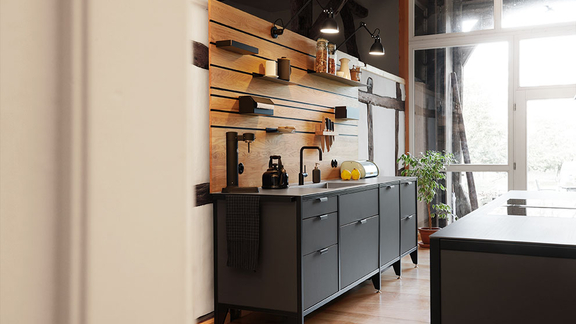

Interiors with an industrial look have been enjoying increasing popularity for several years now.
How can you create an industrial-style kitchen and which colours, materials and furniture are suitable for this kitchen trend? We shed light on these questions for you and present a particularly successful project.
Kitchen planning details
Robust functionality, authenticity and open-plan layouts are three key elements that characterise the industrial style. Unadorned, practical designs take centre stage. The love of authenticity is demonstrated by surfaces with simple finishes or in their raw state.
The origins of the style define the visual model: it is old factory floors that are converted into living spaces while retaining an aura of improvisation. This is achieved, for example, through a contrast between old and new and a mix of natural and technical materials. For this reason, industrial-style kitchens are an excellent choice for modernising old buildings.
An example from Jan Cray Möbel & Küchen from Hamburg illustrates what this can look like in practice. Together with interior designer Vivian Graé, the company designed an industrial-style eat-in kitchen in a listed country house in Brandenburg. To this end, they converted a former passageway area.
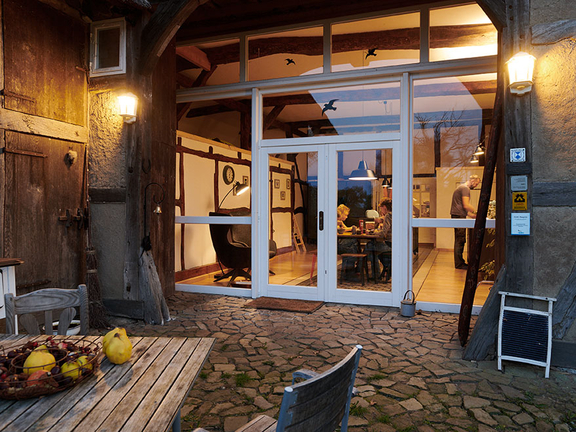
Jan Cray kitchen furnishings are characterised by their timeless functionality and durability. Characteristics that it shares with the farmhouse built in 1755 with its thatched roof, half-timbering and clay plaster. At the same time, the modules of the kitchen in minimalist industrial design form an exciting contrast to the old half-timbered walls of the country house.
The open-plan layout of the industrial-style kitchen is emphasised by a spacious cooking island , which houses a BORA cooktop extractor system. Thanks to its downdraft extractor , it creates a clear view and space for two pendant lights with a purist aesthetic.
The exciting contrast between the modern kitchen modules and the half-timbered background is not unique to Jan Cray's kitchen. A programme of contrasts is also the order of the day when it comes to materials: while metal sets industrial accents, wood brings warmth and cosiness to the room. This mix of materials is typical of industrial-style kitchens - as are the sleek surfaces. The metal is simply lacquered, the wood shows its natural grain.
However, you are by no means restricted to wood and metal when planning an industrial-look kitchen. In principle, all materials with a robust and authentic look are perfect. Concrete or materials with a concrete look are popular, whether in the form of furniture or walls. Unplastered brick walls, glass or leathercan also find their place in the design of the kitchen, for example.
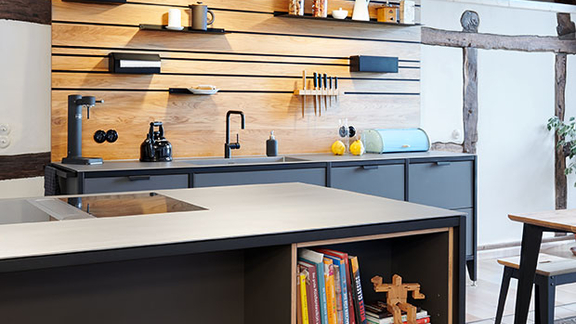
The colour palette of industrial-style furnishings and kitchens is derived from the love of an authentic look. Painted surfaces are preferably presented in non-colours such as black, anthracite and light grey. In addition, white is suitable in moderation for an industrial-style kitchen, for example as a wall colour. Sparingly dosed accents can be set with signal colours such as orange-red. In our example, this was done with the frame of a bench.
Warm natural tones such as beige and brown can be introduced into the room primarily through the use of wood. In the Jan Cray kitchen presented here, the natural material can be found in the dining table, benches and stools as well as a wall panel shelving system.
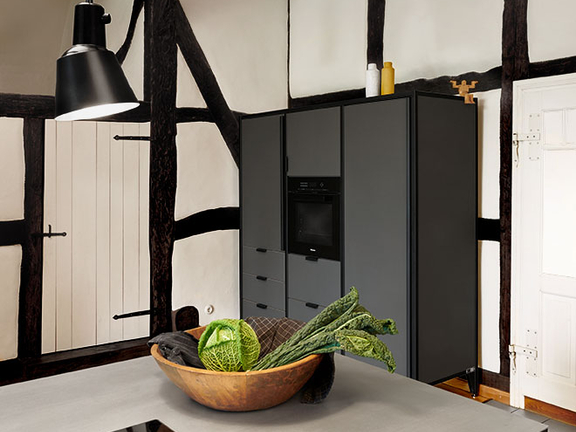
However, this is not the only way to play with the charm of natural surfaces. Elements made of unlacquered metals such as brass, copper or sheet zinc have also proven their worth, presenting themselves in their characteristic colours. The fact that such metals tarnish over time is entirely intentional and emphasises their radiance. For the same reason, aluminium wood is a popular material for industrial-style kitchens, such as for table tops.
Last but not least, it is often the small details that make the difference. In Jan Cray's kitchen furniture, for example, these are the bases of the dining table, benches and stools with visible screw fittings. In this way, the industrial style furniture in the kitchen gives the impression that it would be equally at home in a workshop. In general, such visible design details are a tried-and-tested means of preventing an overly clean look. An approach that is also reflected in the fronts with simple metal handles, which were chosen instead of handleless fronts.
The functionality of the lights above the sink and worktop is also immediately apparent: they are classic articulated lights that have existed in a similar form since the 1930s. Such designs from the early modern era also function as decoration in an industrial style kitchen. It doesn't matter whether they are genuine vintage pieces - i.e. reused pieces - or new editions of classics.
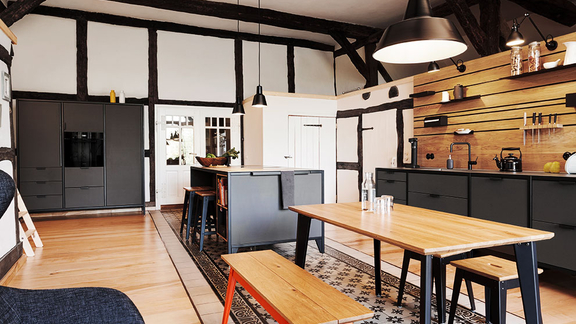
The industrial style kitchen from Jan Cray illustrates the unique visual appeal of the industrial style. Equally pleasing is the fact that it proves to be extremely suitable for everyday use - thanks to the robust materials and surfaces. And thanks to the functional and minimalist design, durability goes hand in hand with a timeless look.